In a small corner lot made of three levels in a steep slope, in front of the white house – oldest remnant of the Lagoa da Conceição region –, we designed a small construction, mixture of house and studio, that seeks dialogue with the noble neighbour and the lagoon’s landscape in the background.

Casa da Lagoa, Florianópolis SC Brasil, 2019. Architects Francisco Fanucci and Marcelo Ferraz / Brasil Arquitetura
Foto/Photo Ronaldo Azambuja
The house sits, as if fitted between the stone retaining walls, on the existing levels, without changing the terrain. On the contrary, the design takes advantage of the unevenness for the implantation of two two-story volumes, separated from each other by an internal courtyard and connected by a walkway.

Casa da Lagoa, Florianópolis SC Brasil, 2019. Architects Francisco Fanucci and Marcelo Ferraz / Brasil Arquitetura
Foto/Photo Eduardo Beltrame
As basic materials we used the exposed concrete on the slabs and the support wall along all the terrain, whitewashed walls, white goiás stone flooring and wooden frames. The use of glass continuously and in sequence in all frames, from the front street to the back of the lot, creates an intentional transparency, seeking the green landscape of the mountains and the blue of the lagoon in distance.

Casa da Lagoa, Florianópolis SC Brasil, 2019. Architects Francisco Fanucci and Marcelo Ferraz / Brasil Arquitetura
Foto/Photo Ronaldo Azambuja
Small details have great importance in this design. One of which is worth mentioning is the painting of three blind wooden panels on the frames of the living room and of one of the bedrooms in the back. Their colours are the same shades of red and blue used in the small boats typical in all Brazilian coast and a striking presence on the island of Santa Catarina.

Casa da Lagoa, Florianópolis SC Brasil, 2019. Architects Francisco Fanucci and Marcelo Ferraz / Brasil Arquitetura
Foto/Photo Ronaldo Azambuja
datasheet
project
Casa da Lagoa
local
Florianópolis SC Brasil
year
Project: 2016
Work: 2019
area
Land: 205 m²
Built: 174 m²
architecture
Francisco Fanucci and Marcelo Ferraz (authors), Cícero Ferraz Cruz (coauthor), Anne Dieterich, Gabriel Mendonça, Julio Tarragó, Laura Ferraz, Luciana Dornellas, Pedro Renault, Roberto Brotero and William Campos (contributors), Gabriel Carvalho, Guega Rocha Carvalho, Heloísa Oliveira and Juliana Ricci (trainees) / Brasil Arquitetura
publication drawings
Victor Maitino
architect
João Edmundo Bohn Neto
frames
Mazal indústria de esquadrias de madeira
photos
Eduardo Beltrame and Ronaldo Azambuja



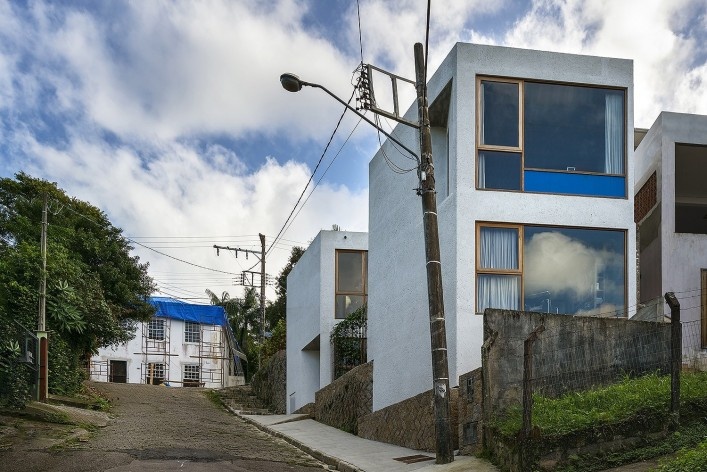
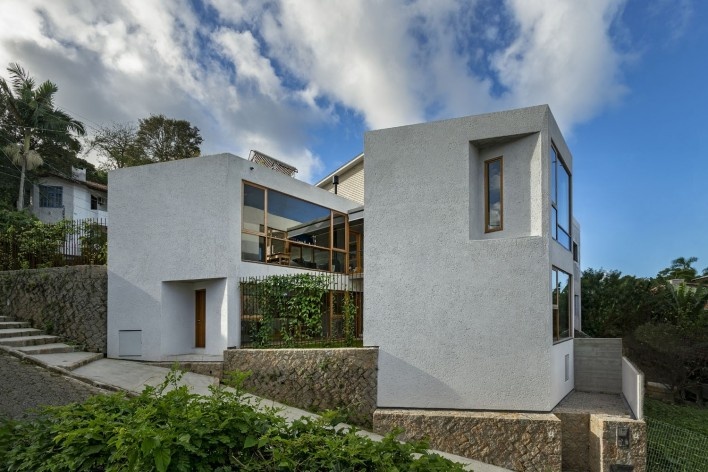
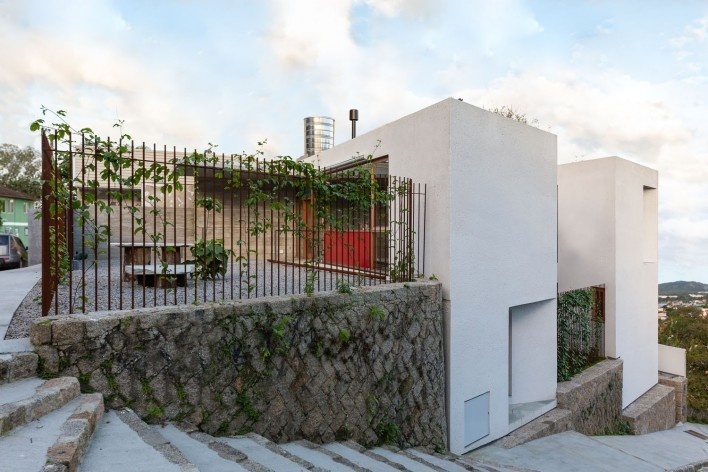
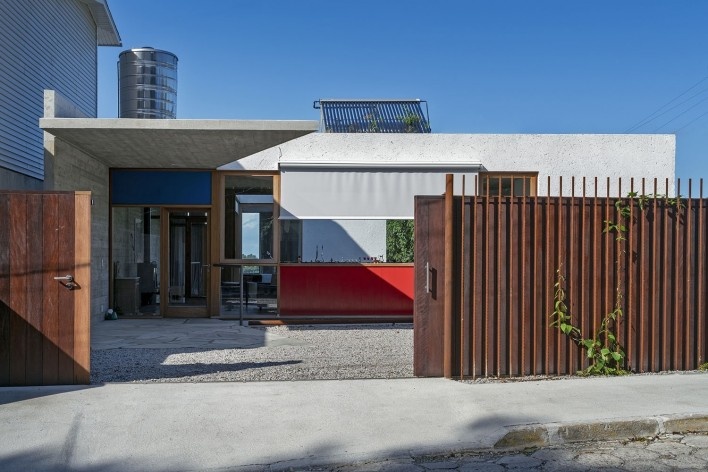
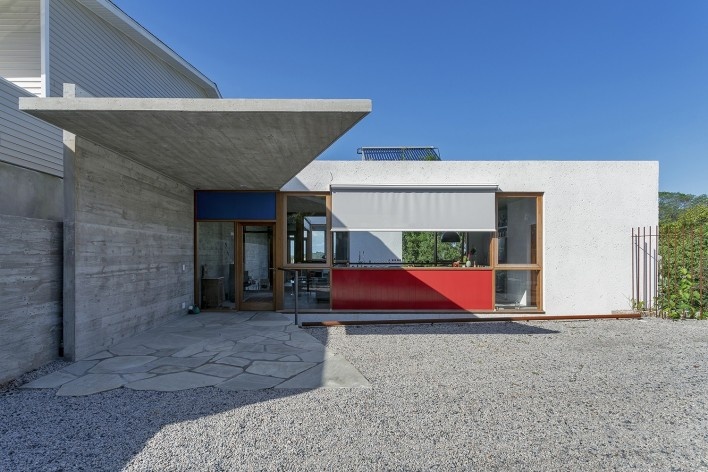
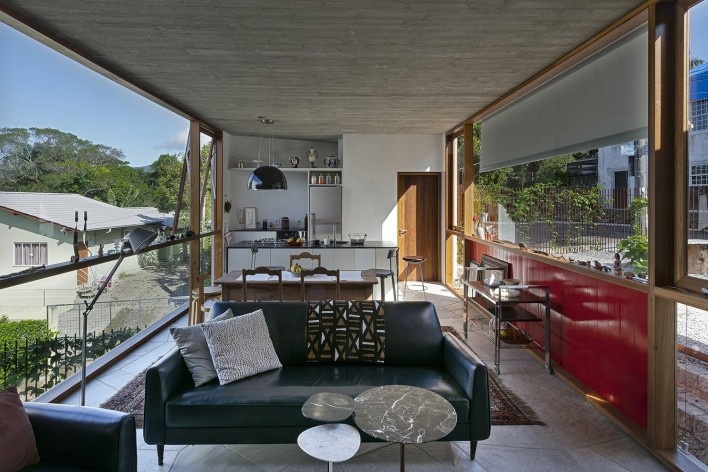
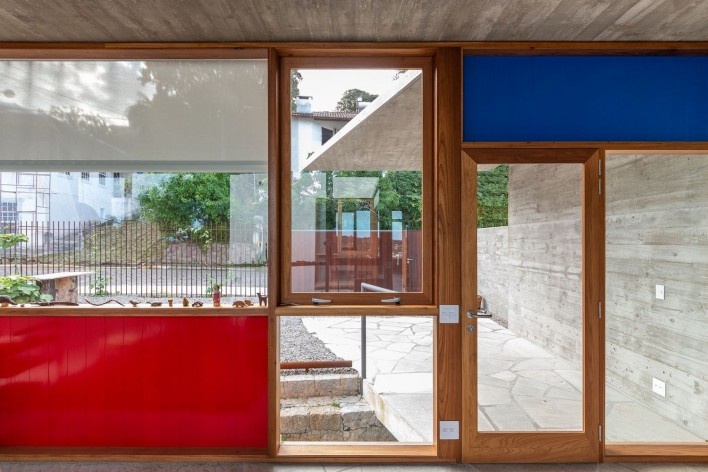
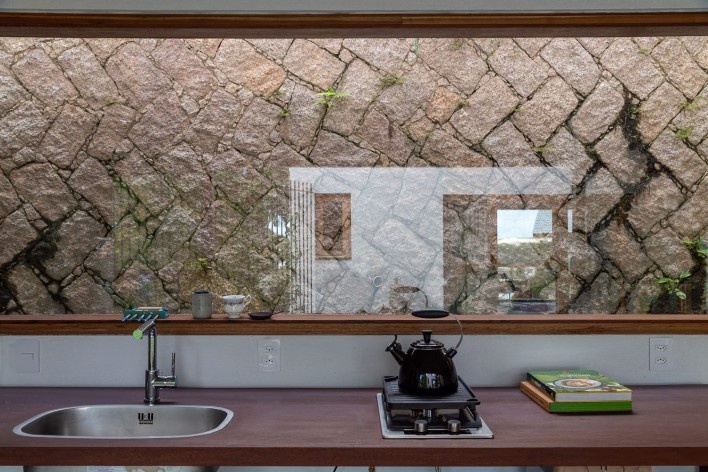
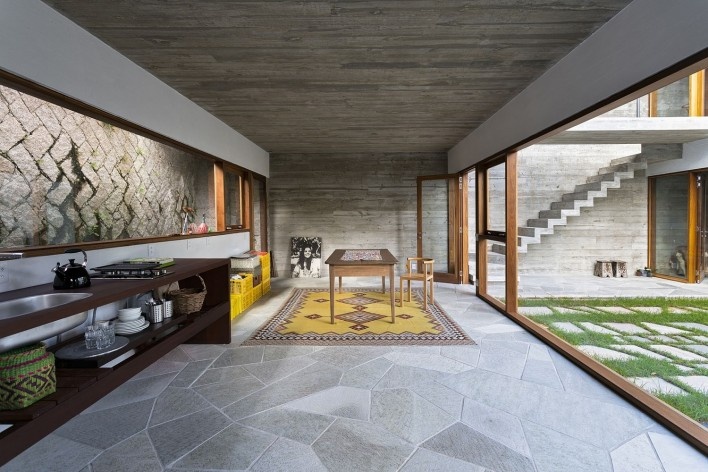
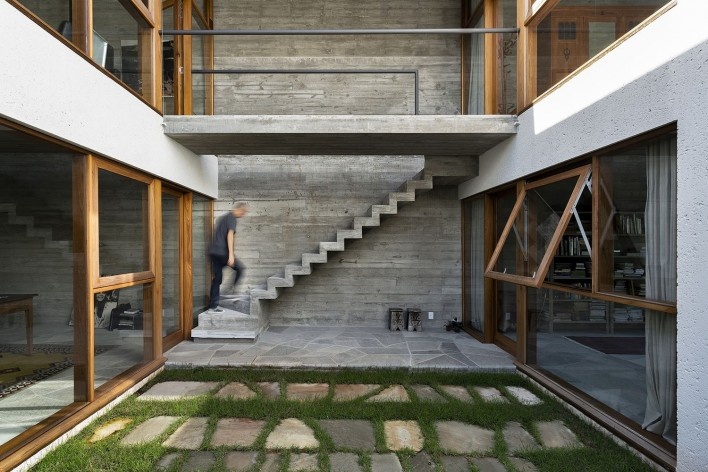
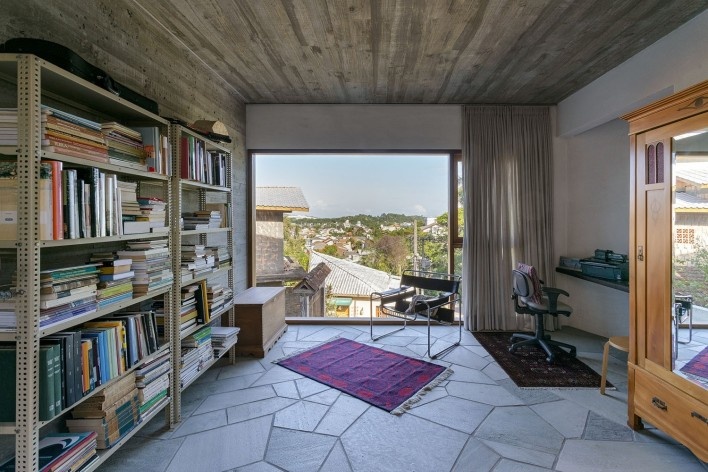
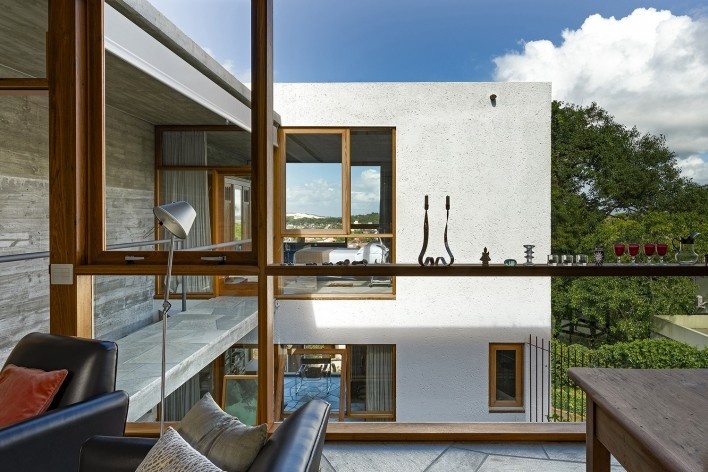
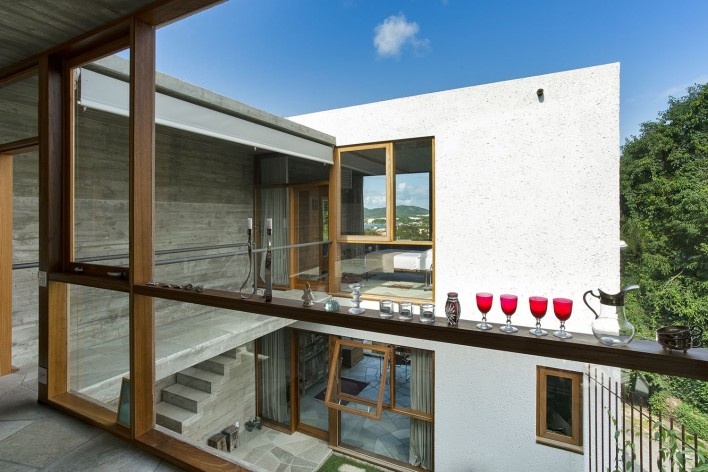
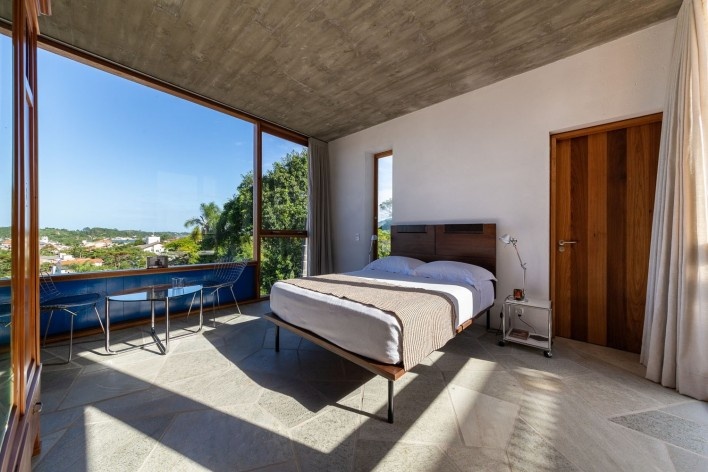
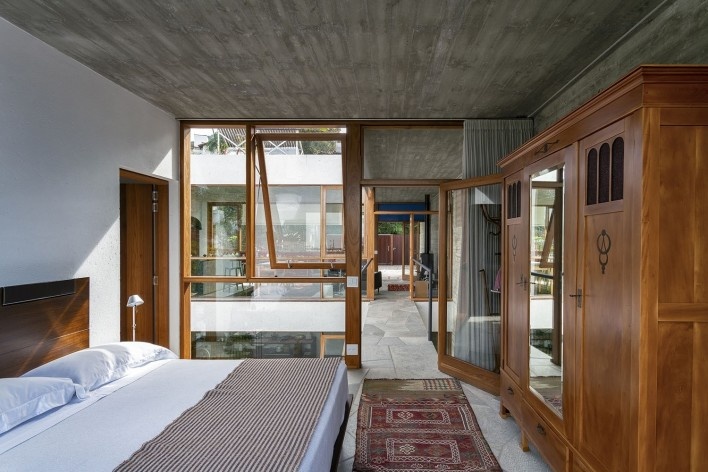
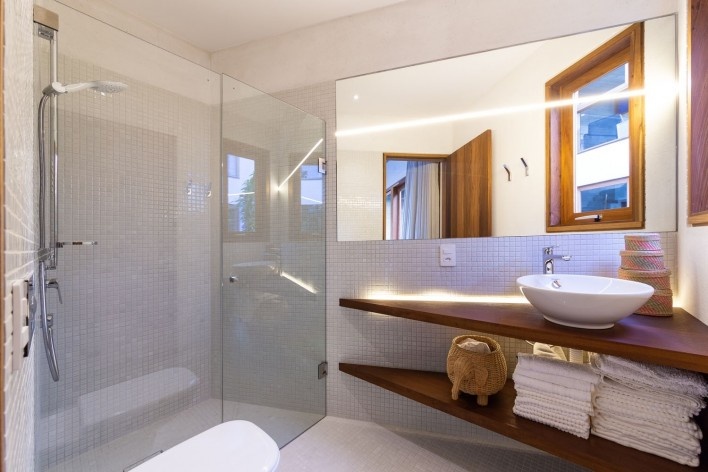
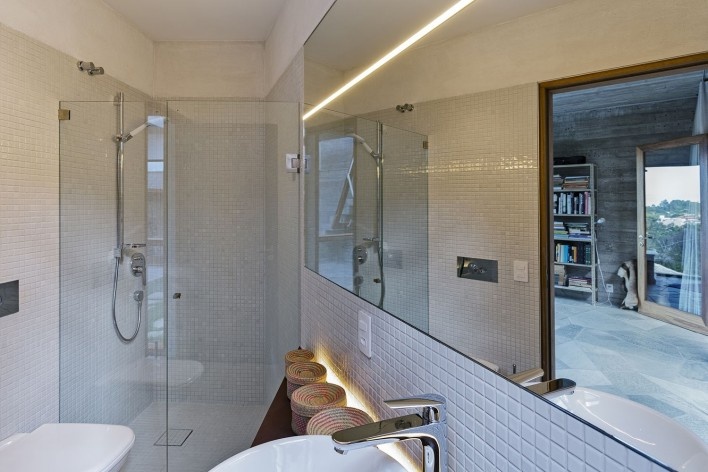
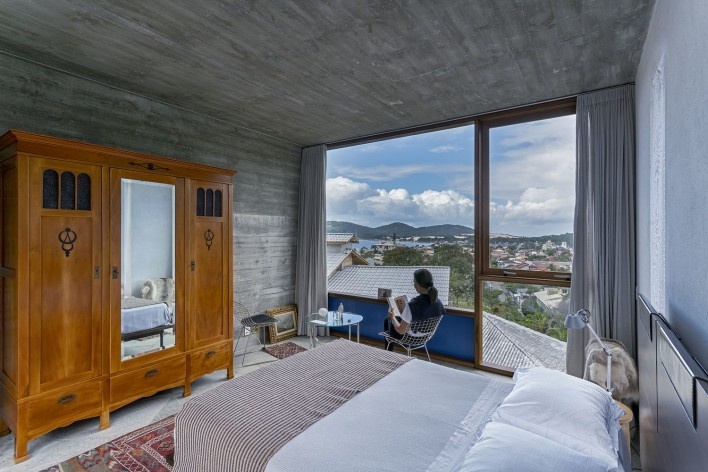
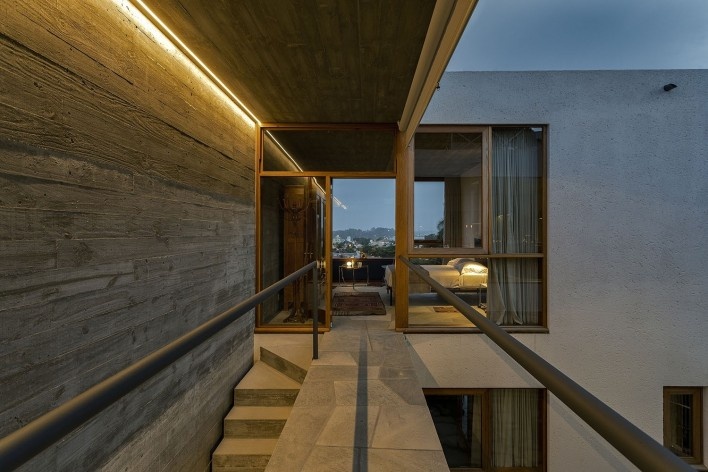
![Casa da Lagoa, first floor plan, Florianópolis SC Brasil, 2019. Architects Francisco Fanucci and Marcelo Ferraz / Brasil Arquitetura<br />Imagem divulgação [Acervo Brasil Arquitetura]](https://vitruvius.com.br/media/images/magazines/grid_12/fb01431baaed_ba_casa_da_lagoa27.jpg)
![Casa da Lagoa, second floor plan, Florianópolis SC Brasil, 2019. Architects Francisco Fanucci and Marcelo Ferraz / Brasil Arquitetura<br />Imagem divulgação [Acervo Brasil Arquitetura]](https://vitruvius.com.br/media/images/magazines/grid_12/3b27041ad9de_ba_casa_da_lagoa28.jpg)
![Casa da Lagoa, roof floor plan, Florianópolis SC Brasil, 2019. Architects Francisco Fanucci and Marcelo Ferraz / Brasil Arquitetura<br />Imagem divulgação [Acervo Brasil Arquitetura]](https://vitruvius.com.br/media/images/magazines/grid_12/7d10668a5fd4_ba_casa_da_lagoa29.jpg)
![Casa da Lagoa, West elevation, Florianópolis SC Brasil, 2019. Architects Francisco Fanucci and Marcelo Ferraz / Brasil Arquitetura<br />Imagem divulgação [Acervo Brasil Arquitetura]](https://vitruvius.com.br/media/images/magazines/grid_12/b50b169099b6_ba_casa_da_lagoa30.jpg)
![Casa da Lagoa, longitudinal section, Florianópolis SC Brasil, 2019. Architects Francisco Fanucci and Marcelo Ferraz / Brasil Arquitetura<br />Imagem divulgação [Acervo Brasil Arquitetura]](https://vitruvius.com.br/media/images/magazines/grid_12/a44d62091e31_ba_casa_da_lagoa31.jpg)
![Casa da Lagoa, longitudinal section, Florianópolis SC Brasil, 2019. Architects Francisco Fanucci and Marcelo Ferraz / Brasil Arquitetura<br />Imagem divulgação [Acervo Brasil Arquitetura]](https://vitruvius.com.br/media/images/magazines/grid_12/1c88343a62d6_ba_casa_da_lagoa32.jpg)
![Casa da Lagoa, transverse section, Florianópolis SC Brasil, 2019. Architects Francisco Fanucci and Marcelo Ferraz / Brasil Arquitetura<br />Imagem divulgação [Acervo Brasil Arquitetura]](https://vitruvius.com.br/media/images/magazines/grid_12/24b34e6bea5b_ba_casa_da_lagoa33.jpg)



















![Casa da Lagoa, first floor plan, Florianópolis SC Brasil, 2019. Architects Francisco Fanucci and Marcelo Ferraz / Brasil Arquitetura<br />Imagem divulgação [Acervo Brasil Arquitetura]](https://vitruvius.com.br/media/images/magazines/gallery_thumb/fb01431baaed_ba_casa_da_lagoa27.jpg)
![Casa da Lagoa, second floor plan, Florianópolis SC Brasil, 2019. Architects Francisco Fanucci and Marcelo Ferraz / Brasil Arquitetura<br />Imagem divulgação [Acervo Brasil Arquitetura]](https://vitruvius.com.br/media/images/magazines/gallery_thumb/3b27041ad9de_ba_casa_da_lagoa28.jpg)
![Casa da Lagoa, roof floor plan, Florianópolis SC Brasil, 2019. Architects Francisco Fanucci and Marcelo Ferraz / Brasil Arquitetura<br />Imagem divulgação [Acervo Brasil Arquitetura]](https://vitruvius.com.br/media/images/magazines/gallery_thumb/7d10668a5fd4_ba_casa_da_lagoa29.jpg)
![Casa da Lagoa, West elevation, Florianópolis SC Brasil, 2019. Architects Francisco Fanucci and Marcelo Ferraz / Brasil Arquitetura<br />Imagem divulgação [Acervo Brasil Arquitetura]](https://vitruvius.com.br/media/images/magazines/gallery_thumb/b50b169099b6_ba_casa_da_lagoa30.jpg)
![Casa da Lagoa, longitudinal section, Florianópolis SC Brasil, 2019. Architects Francisco Fanucci and Marcelo Ferraz / Brasil Arquitetura<br />Imagem divulgação [Acervo Brasil Arquitetura]](https://vitruvius.com.br/media/images/magazines/gallery_thumb/a44d62091e31_ba_casa_da_lagoa31.jpg)
![Casa da Lagoa, longitudinal section, Florianópolis SC Brasil, 2019. Architects Francisco Fanucci and Marcelo Ferraz / Brasil Arquitetura<br />Imagem divulgação [Acervo Brasil Arquitetura]](https://vitruvius.com.br/media/images/magazines/gallery_thumb/1c88343a62d6_ba_casa_da_lagoa32.jpg)
![Casa da Lagoa, transverse section, Florianópolis SC Brasil, 2019. Architects Francisco Fanucci and Marcelo Ferraz / Brasil Arquitetura<br />Imagem divulgação [Acervo Brasil Arquitetura]](https://vitruvius.com.br/media/images/magazines/gallery_thumb/24b34e6bea5b_ba_casa_da_lagoa33.jpg)
